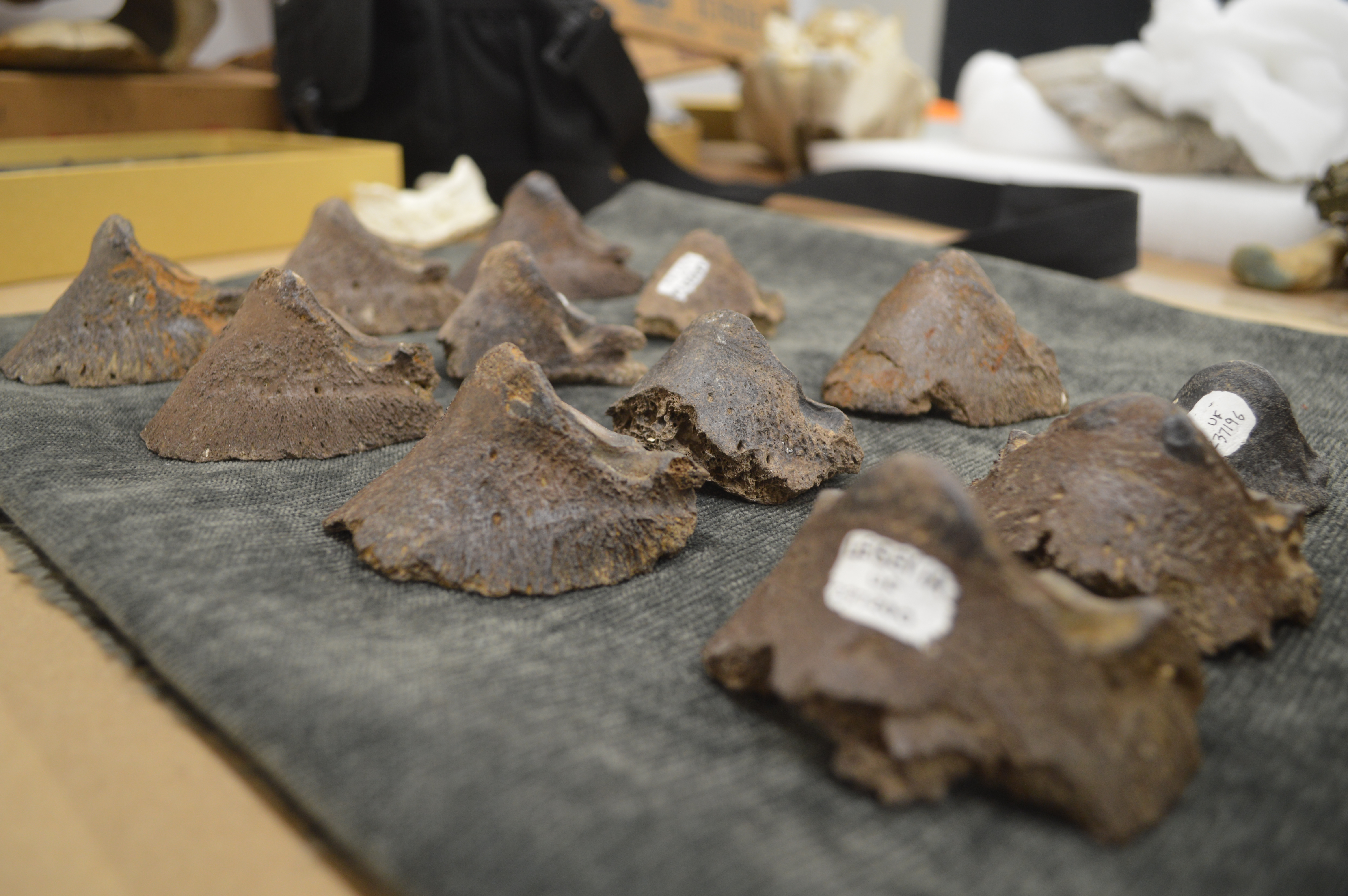by Lane A. Wallett, DVM and Doctoral Candidate, University of Florida
As a veterinarian as well as a paleontologist, I’m interested in how diseases that we see in today’s animals might also have affected them throughout their natural history. If an injury or disease causes change to bone, that same change can be preserved when that bone fossilizes, giving us a look into the lives of animals long dead.
My research focuses on the disease laminitis (also called “founder”) in horses. While there are many possible triggers for laminitis, this work concentrates on its nutritional causes: Too many carbohydrates or too much fluctuation in carbohydrate intake can lead to a cascade of inflammation in a horse’s body, ultimately resulting in damage to the main support structures of the foot. Severe or repeated episodes can leave horses permanently lame, often in great pain. This condition is common in modern horses, but until recently it seemed to be directly related to domestication. New studies of feral horses, however, show that chronic laminitis is not only present in wild populations, but can even be widespread. Given this information, the whole concept of laminitis as a recent development deserves scrutiny.
My first investigation involved a survey of the horse fossil record for evidence of disease. Chronic laminitis causes distinct changes in the last toe bone – sometimes called the coffin bone, or ungual phalanx – making it possible to identify which animals had the disease, and how badly it affected them. The earliest horses appear in North America in the Eocene, approximately 55 million years ago, and continue on this continent until roughly 12,000 years ago; because of this, our equine fossil record is very rich. The last native North American horses belong to the genus Equus, which spans from 3.5 million years ago all the way to the modern horse, E. caballus.
Fossilized ungual phalanges (toe bones, or “coffin bones” ) from a species of Equus dating to about one million years ago Fossilized ungual phalanges (toe bones, or “coffin bones” ) from a species of Equus dating to about one million years ago © Lane Wallet
Through access to the vertebrate paleontology collections at the Florida Museum of Natural History, the American Museum of Natural History, and the Smithsonian Institution, I’ve examined more than a thousand fossilized Equus specimens for signs of laminitis. In total, more than 75% of specimens exhibit some evidence of laminitic pathology, with signs consistent with severe disease in 6.08%. My current focus is on quantifying these individual bone markers using advanced medical imaging technology, starting with CT scanning.


The discovery that laminitis is present in fossil horses opens whole new avenues of research. We can now start to ask questions about how diet and environment, or trends in horse evolution like increasing body size and decreasing digit numbers, affected disease presentation. Ultimately, the biggest question is what role domestication actually played in laminitis. To begin to answer that, the next phase of research will include using the same surveying techniques from the fossil specimens on remains from the Botai culture of 3500 B.C.E., identified as the earliest known examples of horse domestication. Combined with the fossil work, these studies will give us a better understanding not only of how disease and evolution interact, but also how human behavior can impact that relationship.